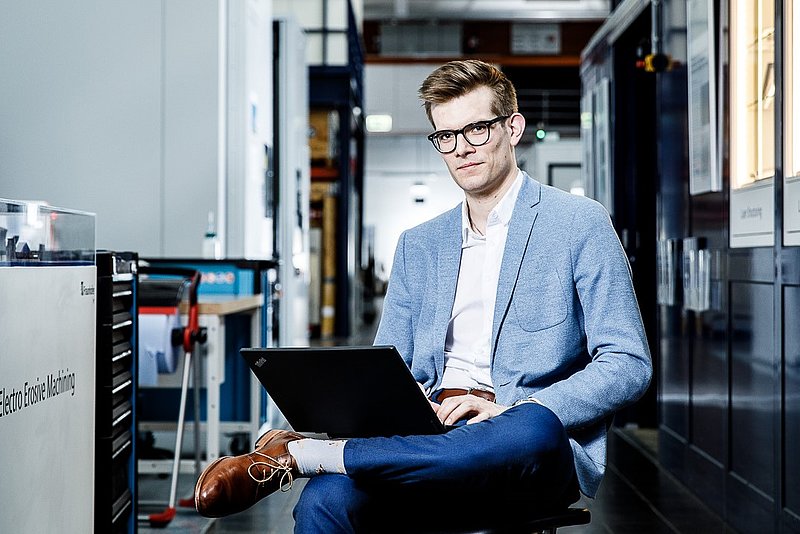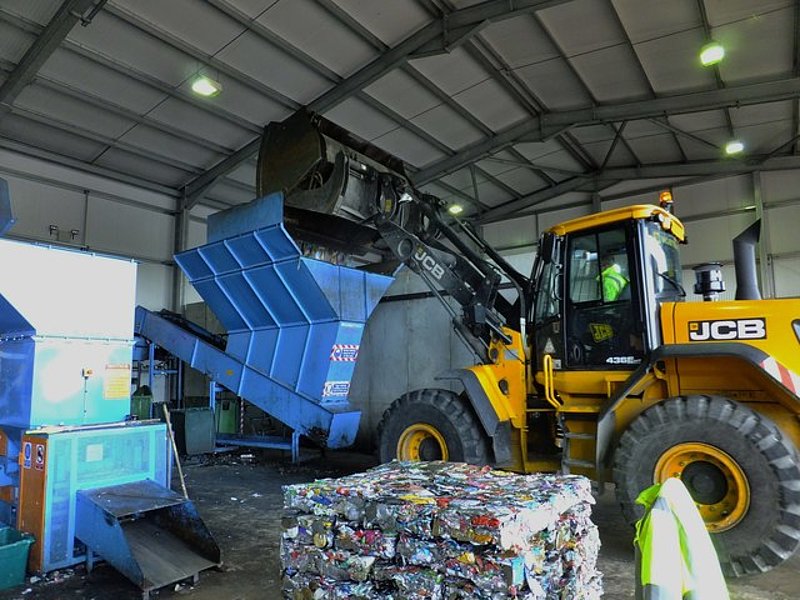"Recycling Starts With Product Design"
Recycling plays a crucial role in the fight against climate change. But only a small percentage of plastic is recycled worldwide. Yet the rate could be drastically increased with cleverly designed plastic products and intelligent waste systems. Raphael Kiesel talks about innovative methods in waste management.
- Dear Raphael, when I look in the fridge at home, I see one thing above all: plastic. The margarine, the ketchup, the yoghurt. As soon as the package is empty, I throw it in the yellow bag. Is my idea naïve that they are recycled?
To give you a short answer: Yes, still a large part of the waste from the yellow bag goes to the incinerator. Very many plastic products in the yellow bag are made of PE and PP, which in the vast majority of cases are not recycled. Many people are not aware of this, and when they find out, they ask themselves: Is it even worth separating household waste so meticulously? Here, too, the answer is clear: we all have to separate cleanly at home so that at least this recyclable portion is reused.
- Admittedly: That surprises me too. Why is only such a small part recycled?
Well, rubbish is not rubbish, and plastic is not just plastic. First, the waste goes to sorting plants where it is sorted according to material type. This includes sheet metal, plastic and aluminium - to name just three. Separating these materials from each other is comparatively simple. It gets more difficult with plastic types, which also have to be sorted. PP, PE and PET are three of the most common types of plastic. The problem is that different types are often used in a product; they are mixed and sometimes have additives such as plasticisers that give the product certain properties. But this also makes it virtually impossible to recycle them later. So far, only PET, which is used in plastic bottles for example, can be separated and recycled really effectively. But with more durable products like toothbrushes and razors, it quickly becomes very complex. At present, it is virtually impossible for sorting plants to separate all the used materials by type later on - also because it is often impossible to identify the composition of the plastic.
- Would the problem be solved if we suddenly knew exactly how all these products are put together?
That would be the ideal, of course, but from a technological and economic perspective this will take some time. However, a more promising approach to increasing recycling rates is what we call compounding, which is something we have been working on in research at UW Madison. Compounding involves deliberately mixing certain types of plastic with the aim of improving the material properties in the best case scenario. We looked at LDPE and PP because they are currently difficult to separate using conventional processes due to their very similar densities, and are accordingly not recycled. So we have made a virtue out of necessity: what cannot be separated is deliberately mixed together - but in a clever way. In the best case, the recycled product is then even higher quality than the original product and exists in this form over several cycles. In our research so far, we have been able to recycle certain compoundings about ten times. This is an enormously important finding, and so compounding is also becoming more and more interesting in industry. Because normally, recycling degrades the material properties and the plastics lose value. So the big chance is that recycling rates will be increased because no attempt is made to separate the types of plastic or to find suitable separation processes, but to deliberately mix them and thus increase the properties of the plastic.
- All well and good - but this does not solve the problem that many products still cannot be recycled because the sorting plants cannot recognise what they are made of. Compounding doesn't change that either.
This is precisely where our second major focus comes into play: the digitalisation of waste management - and it starts in production. We are dealing with the question of how we can make products traceable and give them their own "identity", which contains the information with the composition, for example with barcodes. But here we are still at the beginning, because the problem with barcodes is, for example, that they can be destroyed during shredding and are no longer readable, and they also have to be readable across national borders - to name just two hurdles. Building on the results in our Cluster of Excellence "Internet of Production", we are looking for new solutions to this problem. The fact is that digitalisation will also be immensely important here for the traceability of products - and that it must also start here at the production stage and not just at the end of the cycle.
- Well, knowing what's in the product - does that help me at all in practice? Would more waste actually be separated just because we now know what the waste is made of? The economic incentive for more recycling, which is currently lacking, is not created by this.
Yes, it is part of the solution, and the economic consideration must also play a role or the starting position must be improved. But for us material scientists, the first thing is to find out how it works in theory and in practice under optimal conditions. This is the frustrating part of research: not every good idea or development actually makes it into industry in the end, as long as the economic calculation remains the measure of all things. But even if our research only helps with a small part - such as high-end products - we have already gained something. I am convinced that in the future there will also have to be business models that are sustainably oriented - and then our technology will be ready and will not have to be developed first. I am convinced that once you know what the product is made of, you have taken a big step towards more recycling. Design for Recycling!
- Raphael, thank you very much for the interview!



